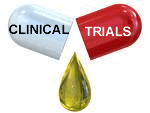HCV
Protease Inhibitor Danoprevir Promising in Early Trial
SUMMARY
Experimental HCV protease inhibitor danoprevir (formerly RG7227
and ITMN-191) was safe and showed good antiviral activity
at higher doses in a 14-day study of treatment-naive and previously
treated genotype 1 chronic hepatitis C patients. |
By
Liz Highleyman
 The
development of direct-acting antiviral agents that interfere with
various steps of the hepatitis C virus (HCV) lifecycle will revolutionize
treatment, especially for difficult-to-treat patients.
The
development of direct-acting antiviral agents that interfere with
various steps of the hepatitis C virus (HCV) lifecycle will revolutionize
treatment, especially for difficult-to-treat patients.
The first 2 HCV protease inhibitors -- boceprevir
(Victrelis) and telaprevir
(Incivek) -- were approved in May, and a large number of novel
and next-generation agents are currently in the development pipeline.
Initially these drugs will be used with standard therapy consisting
of pegylated interferon (Pegasys
or PegIntron) plus ribavirin, but all-oral regimens are currently
under study.
As reported in the June
2011 Journal of Hepatology, Nicole Forestier and Stefan
Zeuzem from J.W. Goethe University in Frankfurt and colleagues
assessed the safety, pharmacokinetics, and antiviral activity
of the selective HCV NS3/4A serine protease inhibitor danoprevir
in a placebo-controlled 14-day multiple-ascending-dose study.
This
analysis included 4 cohorts of treatment-naive patients randomly
assigned to receive 100 mg or 200 mg danoprevir
every 8 hours (3-times-daily) or the same doses every 12 hours
(twice-daily), as well as 1 cohort of prior pegylated interferon/ribavirin
non-responders who received 300 mg danoprevir every 12 hours;
cohorts also included placebo recipients.
Results
 |
Among
treatment-naive participants, maximal HCV RNA viral load decreases
were 3.9 log IU/mL in the 200 mg 3-times-daily group and 3.2
log IU/mL in the 200 mg twice-daily group. |
 |
At
the end of the 14-day treatment period, viral declines in
these 2 cohorts were within 0.1 log IU/mL of the viral load
nadir, or lowest level. |
 |
Non-responders
experienced "more modest" HCV RNA reductions than
those seen in the treatment-naive 200 mg cohorts, despite
receiving a higher dose. |
 |
Nearly
30% of participants (10 of 37) experienced viral rebound during
treatment, with a higher risk among those with HCV subtype
1b. |
 |
Rebound
was associated with the NS3 R155K mutation in people with
both HCV 1b and 1a. |
 |
Danoprevir
was generally safe and well-tolerated. |
 |
Adverse
events were typically mild and transient, and were not associated
with dose level. |
"Danoprevir
was safe and well tolerated when administered for 14 days in patients
with chronic HCV genotype 1 infection," the study authors
concluded. "These results support further clinical evaluation
of danoprevir in patients with chronic HCV."
Due
to delays in publishing, more recent data have since been presented
at hepatitis conferences and in other journals.
Studies
have shown that danoprevir reaches higher concentrations and
has more potent antiviral activity when boosted with ritonavir
(Norvir), a drug used in small doses to boost several HIV drugs.
Boosting enables less frequent dosing, giving danoprevir a potential
advantage over boceprevir and telaprevir, both of which are taken
3 times daily.
Results
from the INFORM-1 trial showed that danoprevir plus the HCV
polymerase inhibitor mericitabine (RG7128) reduced HCV viral load
by about 5 logs over 14 days in both treatment-naive and previously
treated patients. But drug resistance was a concern, underling
the need for potent combination regimens.
Most
recently, investigators
reported this spring at the European Association for the Study
of the Liver (EASL) meeting that while nearly 90% of genotype
1b prior non-responders treated with ritonavir-boosted danoprevir
plus pegylated interferon/ribavirin experienced early virological
response at week 12, half of patients with genotype 1a experienced
viral breakthrough, demonstrating the importance of HCV subtype
as a predictor of treatment response.
"The
barrier to virologic rebound in subtype 1b HCV appears to be higher
than that in subtype 1a HCV owing to a reliance on the R155K substitution
for viral escape in both subtypes," the authors of the present
study suggested. "The lower incidence of viral rebound in
subtype 1b compared to subtype 1a may reflect the requirement
for 2 nucleotide substitutions to generate R155K in subtype 1b
compared to the single nucleotide substitution required in subtype
1a."
Investigator
affiliations: J.W. Goethe Universität, Frankfurt, Germany;
CHU Montpellier, France; Pontchaillou Hospital, Rennes, France;
Hôpital Beaujon, Clichy, France; Centre CAP, Montpellier,
France; Biotrial, Rennes, France; Genentech, Inc., South San Francisco,
CA; InterMune, Inc., Brisbane, CA.
6/14/11
Reference
N
Forestier, D Larrey, D Guyader, et al. Treatment of chronic hepatitis
C patients with the NS3/4A protease inhibitor danoprevir (ITMN-191/RG7227)
leads to robust reductions in viral RNA: A phase 1b multiple ascending
dose study. Journal of Hepatology 54(NUM):1130-1136 (abstract).
June 2011.
